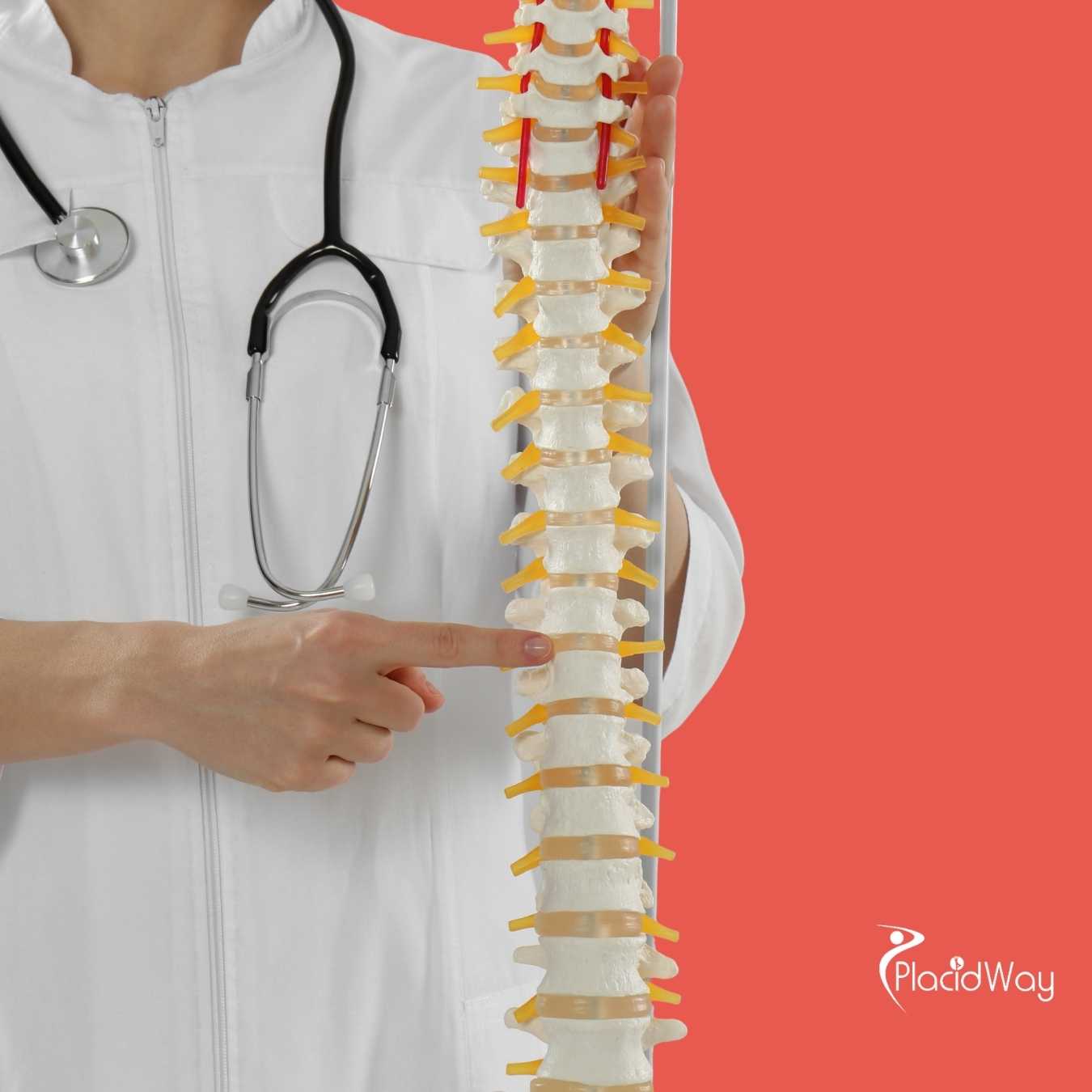Healing Hands with Stem Cells: What You Need to Know
.png)
If you’re experiencing persistent hand pain, stiffness, or reduced mobility, you’re likely searching for effective treatment options beyond traditional methods. Our hands are crucial for daily life, and any impairment can significantly impact your independence and quality of life. You might have heard about stem cell therapy as a cutting-edge approach, but the big question remains: does stem cell therapy work for hands?
The answer is increasingly looking positive, especially for degenerative conditions and injuries. Stem cell therapy for hands is gaining traction as a regenerative medicine solution aimed at harnessing the body's natural healing capabilities to repair damaged tissues, reduce inflammation, and alleviate pain. This innovative treatment seeks to address the root cause of discomfort rather than just managing symptoms, offering hope for long-term relief and improved function for various hand-related ailments.
Does Stem Cell Therapy Work for Hand Pain and Arthritis?
For individuals suffering from chronic hand pain, particularly due to conditions like osteoarthritis, stem cell therapy offers a compelling alternative to traditional treatments. Osteoarthritis, a common cause of hand pain, involves the breakdown of cartilage in the joints, leading to pain, stiffness, and loss of function. Stem cells, especially mesenchymal stem cells (MSCs), possess unique properties that allow them to differentiate into various cell types, including cartilage cells, and to secrete growth factors that modulate inflammation and promote tissue repair.
When administered into affected hand joints, these cells can help regenerate damaged cartilage, ligaments, and tendons, providing structural support and improving joint mechanics. Patients often report significant reductions in pain, increased grip strength, and enhanced overall mobility in their hands. While not a guaranteed cure, it represents a significant step forward in managing and potentially reversing the degenerative processes that cause hand pain and arthritis.
What Conditions in the Hands Can Stem Cell Therapy Treat?
The versatility of stem cells makes them a suitable treatment option for a wide array of hand conditions. Beyond osteoarthritis, which is a primary target, regenerative medicine for hands extends to several other challenging ailments:
- Rheumatoid Arthritis (RA): While RA is an autoimmune disease, stem cells can help modulate the immune response, reduce inflammation, and repair joint damage caused by the condition.
- Tendonitis and Tenosynovitis: Conditions like De Quervain's tenosynovitis or trigger finger, which involve inflammation and degeneration of tendons, can benefit from the regenerative properties of stem cells.
- Ligament Injuries: Sprains or tears in the small ligaments of the hand and wrist can be treated to promote stronger, faster healing.
- Carpal Tunnel Syndrome: In some cases, stem cell therapy can reduce inflammation and promote nerve healing, potentially alleviating symptoms of median nerve compression.
- Degenerative Disc Disease of the Neck Affecting Hands: Though indirect, addressing cervical spine issues impacting hand nerve function can also be considered through a broader regenerative approach.
By targeting the underlying tissue damage and inflammation, stem cell therapy offers a holistic approach to restoring hand health and function for these diverse conditions.
How is Stem Cell Therapy Performed on the Hands?
The process of receiving stem cell therapy for hands is generally straightforward and minimally invasive. It usually begins with the extraction of stem cells from the patient's own body, most commonly from bone marrow (often from the hip) or adipose tissue (fat). This procedure is performed under local anesthesia and is well-tolerated by most patients.
Once harvested, the biological material containing the stem cells is processed in a specialized laboratory to concentrate the therapeutic cells. This concentrated solution, rich in mesenchymal stem cells and growth factors, is then precisely injected into the target areas of the hand. Physicians often use ultrasound or fluoroscopy imaging guidance to ensure accurate placement into specific joints, tendons, or ligaments. The entire procedure, from harvest to injection, can often be completed within a single day, allowing patients to return home shortly after.
What Are the Benefits of Stem Cell Therapy for Hands?
Choosing stem cell therapy for hand pain and other conditions comes with several compelling advantages over traditional treatments:
- Pain Reduction: Many patients experience a substantial decrease in chronic hand pain, often leading to reduced reliance on pain medications.
- Improved Function and Mobility: By promoting tissue regeneration and reducing inflammation, therapy can restore range of motion, increase grip strength, and enhance overall dexterity, improving daily activities.
- Tissue Regeneration: Unlike treatments that merely mask symptoms, stem cells actively work to repair and regenerate damaged cartilage, tendons, and ligaments, addressing the root cause of the problem.
- Minimally Invasive: As an injection-based therapy, it avoids the risks, prolonged recovery times, and scarring associated with surgical interventions.
- Natural Healing: The therapy utilizes the body's own healing mechanisms, minimizing the risk of allergic reactions or rejection.
- Potential to Delay Surgery: For many, stem cell therapy can delay or even eliminate the need for more invasive surgical procedures, such as joint replacement or fusion.
These benefits contribute to a better quality of life and sustained relief for individuals suffering from various hand ailments.
What Are the Potential Risks and Side Effects of Stem Cell Therapy for Hands?
While stem cell therapy is considered safe, like any medical procedure, it carries some potential risks and side effects. However, these are generally mild and temporary, especially when using autologous stem cells (from the patient's own body), which significantly reduces the risk of rejection or adverse immune responses. Common side effects include:
- Temporary Pain and Swelling: At both the donor site (where cells are harvested) and the injection site in the hand, patients might experience mild discomfort, soreness, or swelling for a few days.
- Bruising: Similar to any injection, bruising can occur at the treatment site.
- Infection: Although rare, there is a minimal risk of infection at the injection or harvest site. Clinics follow strict sterile protocols to mitigate this.
- Nerve Damage or Bleeding: Extremely rare, but possible if the injection is not precisely administered. This is why imaging guidance is crucial.
- Allergic Reaction: While highly uncommon with autologous cells, reactions to local anesthetics or processing agents are theoretically possible.
It's important for patients to discuss all potential risks with their healthcare provider and ensure the clinic adheres to high safety standards and proper medical protocols.
How Long Does It Take to Recover from Stem Cell Therapy in the Hands?
One of the appealing aspects of stem cell therapy for hands is the relatively short recovery period compared to surgery. Immediately after the procedure, patients are usually advised to rest the treated hand for a day or two and avoid strenuous activities. Mild pain or soreness at the injection site is normal and can be managed with over-the-counter pain relievers.
Most individuals can resume light daily activities within a few days to a week. However, the true benefits of stem cell therapy, which involve cellular regeneration and tissue repair, are not immediate. It takes time for the stem cells to integrate, proliferate, and exert their therapeutic effects. Patients typically begin to notice improvement in pain and function within 4-6 weeks, with continued progress over the next 3-6 months. Physical therapy may be recommended to optimize results and ensure proper rehabilitation of the hand.
How Much Does Stem Cell Therapy for Hands Cost?
The cost of stem cell therapy for hands is a significant consideration for many patients. Since this is often considered an elective and experimental treatment, it is usually not covered by standard health insurance. The price can fluctuate based on several factors:
Factors Influencing Cost:
- Type of Stem Cells: Whether the cells are derived from bone marrow aspirate concentrate (BMAC), adipose tissue, or umbilical cord blood/tissue (allogeneic sources).
- Number of Injections/Treated Areas: Treating multiple joints or areas in the hand will increase the overall cost.
- Clinic and Location: Prices can vary widely between different clinics, cities, and countries. Highly specialized clinics or those in major metropolitan areas may charge more.
- Physician Expertise: The experience and reputation of the treating physician and their team can influence pricing.
- Additional Therapies: Some protocols may include supplementary treatments like PRP (Platelet-Rich Plasma) injections, which can add to the total cost.
Patients should inquire about all inclusive pricing, including consultations, harvesting, processing, injection, and follow-up appointments, to get a clear understanding of the total investment required for regenerative medicine for hands.
Is Stem Cell Therapy for Hands Covered by Insurance?
Unfortunately, for most patients, stem cell therapy for hands remains an out-of-pocket expense. The primary reason for this lack of coverage is that many insurance companies, particularly in the United States, classify regenerative medicine treatments as experimental or investigational for orthopedic applications. This means that despite growing evidence of efficacy, these therapies have not yet received widespread approval from regulatory bodies or insurance boards for routine coverage.
However, this situation is gradually evolving as more research emerges and clinical trials demonstrate consistent positive outcomes. Patients are encouraged to check with their specific insurance provider, as policies can vary, and some might offer partial coverage for certain aspects of the procedure or for conditions where stem cell therapy has a stronger evidence base. Some clinics may also offer financing options or payment plans to help manage the cost.
Why Consider Medical Tourism for Stem Cell Therapy for Hands?
For many individuals seeking stem cell therapy for hand pain, medical tourism has become an increasingly attractive option. Several factors drive patients to look beyond their national borders for treatment:
- Cost Savings: In many countries, the cost of advanced medical procedures, including stem cell therapy, can be significantly lower than in Western nations, without compromising quality.
- Access to Advanced Treatments: Some clinics abroad offer innovative stem cell treatments or technologies that may not yet be approved or widely available in the patient’s home country.
- Reduced Waiting Times: Patients often face long waiting lists for specialized treatments in their own healthcare systems. Medical tourism can provide faster access to care.
- Specialized Expertise: Certain international clinics and doctors are highly specialized in regenerative medicine for hands, offering world-class expertise and facilities.
- Privacy and Convenience: Some prefer the privacy of receiving treatment away from home, combining their medical journey with a chance to travel and recover in a different environment.
Organizations like PlacidWay specialize in connecting patients with reputable international clinics offering high-quality stem cell therapy, making the medical travel process smoother and more transparent.
What Should I Look for When Choosing a Clinic for Stem Cell Therapy Abroad for Hand Conditions?
Selecting the right clinic for stem cell therapy for hands, especially abroad, requires careful consideration. It's crucial to perform thorough due diligence to ensure safety, efficacy, and a positive experience. Here are key factors to evaluate:
- Accreditation and Licensing: Verify that the clinic is fully licensed and accredited by relevant national and international medical bodies. This ensures adherence to strict quality and safety standards.
- Physician Credentials and Experience: Research the treating physicians. Look for board-certified specialists with extensive experience in regenerative medicine and specific expertise in hand conditions.
- Treatment Protocols: Understand the exact type of stem cell therapy offered, including the source of cells, processing methods, and injection techniques. Ensure they are evidence-based and align with current scientific understanding.
- Transparency in Pricing: Obtain a detailed breakdown of all costs involved, including the procedure, consultations, follow-up, and any associated travel or accommodation assistance.
- Patient Testimonials and Outcomes: Look for credible patient reviews and inquire about success rates for similar hand conditions.
- Communication and Support: Assess the clinic's ability to communicate effectively in your language and provide comprehensive support before, during, and after your treatment.
- Safety and Hygiene Standards: Ensure the clinic maintains impeccable sterile environments and follows stringent safety protocols to minimize infection risk.
A reputable medical tourism facilitator like PlacidWay can assist in vetting clinics and coordinating your treatment journey, ensuring peace of mind.
Can Stem Cell Therapy Help with Nerve Damage in the Hands?
Nerve damage in the hands, often resulting from injury, compression (like in carpal tunnel syndrome), or systemic diseases, can lead to debilitating symptoms such as numbness, tingling, weakness, and severe pain. While traditional treatments focus on relieving pressure or repairing nerve continuity, stem cell therapy offers a unique approach by supporting the natural repair processes of damaged nerves.
Mesenchymal stem cells (MSCs) possess neurotrophic properties, meaning they can secrete growth factors that encourage nerve cell survival, growth, and regeneration. They also have immunomodulatory effects that reduce inflammation around the damaged nerve, which can alleviate compression and pain. In cases of nerve injury or chronic compression, injecting stem cells locally can help rebuild myelin sheaths (the protective coating around nerves), improve nerve signal transmission, and ultimately restore sensation and motor function in the hands. This makes it a promising area for individuals seeking alternatives for persistent nerve-related issues in their hands.
Ready to explore options for your hand conditions? Discover leading medical tourism destinations and clinics offering advanced stem cell therapy for hands and other regenerative treatments through PlacidWay. Connect with experts and find the right solution for your healthcare needs today.


.png)









Share this listing